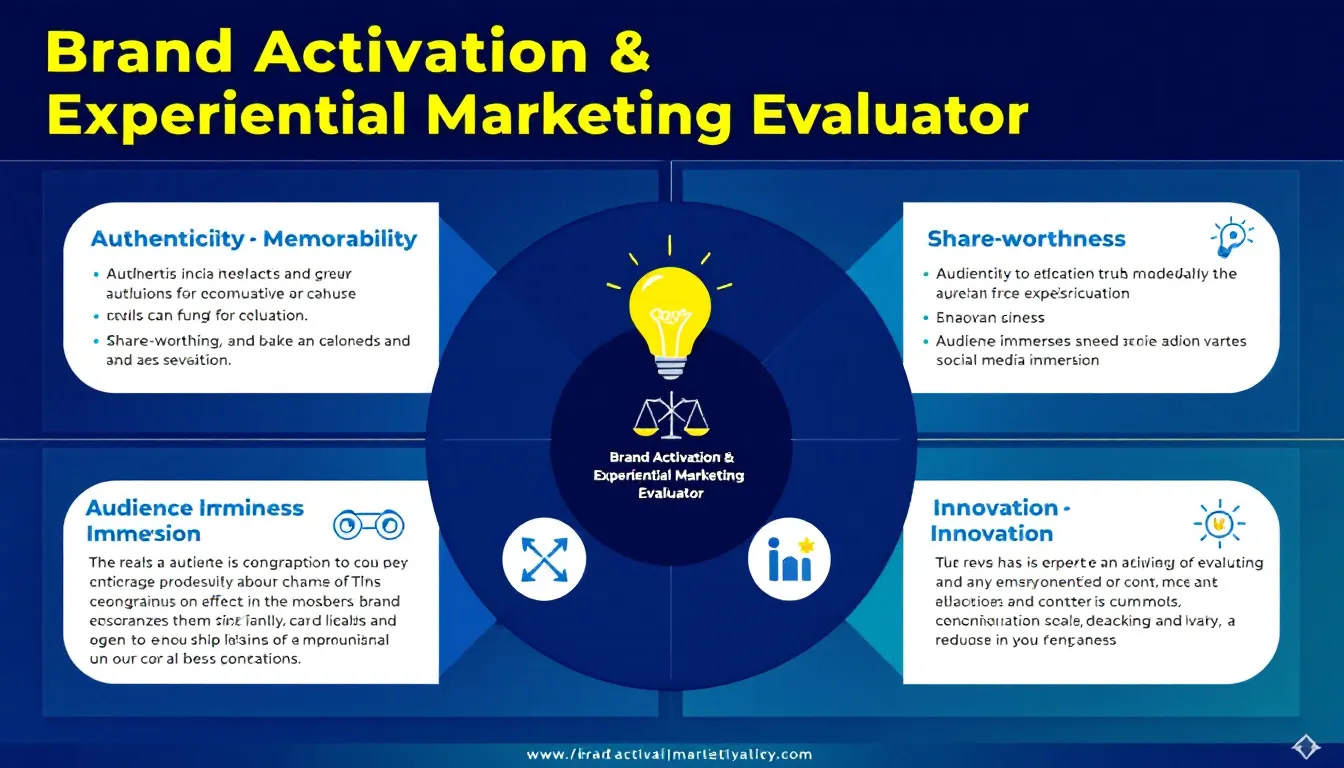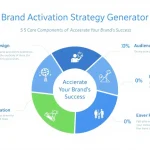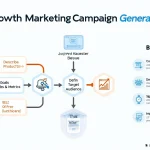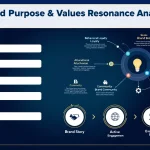Is this tool helpful?
How to Use the Brand Activation & Experiential Marketing Initiative Evaluation Tool Effectively
This tool lets you evaluate your brand activation and experiential marketing efforts through clear, structured inputs. To make the most out of it, follow these guidelines for entering your data:
Input Field Instructions
- Brand Name: Enter the name of your company or product, for example, “Lush Cosmetics” or “Blue Horizon Outdoors”.
- Marketing Initiatives: Describe your current brand activation campaigns and experiential marketing efforts. Sample inputs include “Pop-up eco-friendly packaging workshops at local markets” or “Virtual reality adventure tours showcasing product features”.
- Target Audience: Specify detailed demographic and psychographic information about your audience, such as “Active outdoor enthusiasts aged 30-45 living in coastal regions” or “Tech-savvy urban millennials interested in sustainability”.
- Brand Goals: Clearly state what you aim to achieve with your brand activations, for example, “Increase brand engagement by 30% within six months” or “Enhance customer loyalty through immersive experiences”.
- Current Challenges (Optional): Mention any obstacles or concerns affecting your campaigns, such as “Low event attendance in key markets” or “Difficulty measuring social media impact”.
What the Brand Activation & Experiential Marketing Evaluation Tool Does
This evaluation tool helps you assess how well your brand activation and experiential marketing initiatives connect with your audience and meet your objectives. It measures key factors such as audience engagement, authenticity, and shareability to provide actionable insights for improving your campaigns.
Purpose and Benefits
- Quantify the impact of your brand activations across multiple performance dimensions.
- Identify areas for improvement and innovation within your experiential marketing strategies.
- Gauge how well your campaigns resonate emotionally and culturally with your target audience.
- Optimize resources by directing focus towards high-impact marketing activities.
Practical Applications for the Evaluation Tool
Use this tool to make informed decisions at different stages of your marketing initiatives. Here’s how you can apply it:
Before Launch
Submit your planned activation details to receive feedback. This helps you:
- Validate brand alignment and messaging consistency.
- Ensure the planned activities effectively address your target audience’s interests.
- Predict social media engagement potential.
During Campaign
Evaluate ongoing initiatives to optimize engagement and ROI by:
- Identifying strengths and weaknesses in real time.
- Adjusting interactive elements to increase immersion.
- Tweaking messaging based on current audience feedback.
Post-Activation Review
Analyze the results to guide future campaigns by:
- Assessing memorability and brand recall.
- Measuring share-worthiness and social media amplification.
- Documenting lessons learned for continuous improvement.
Key Evaluation Components Explained
The tool breaks down your submissions into these critical areas, giving you a comprehensive report:
- Authenticity Assessment: Checks if your initiatives align with your brand’s values and voice, ensuring genuine connections.
- Memorability Metrics: Measures how well experiences stick in your audience’s mind.
- Share-worthiness Analysis: Evaluates the potential for your activation to be shared and promoted by your audience on social media.
- Audience Immersion Evaluation: Looks at how deeply your audience engages and interacts with your activations.
- Innovation Opportunity Identification: Highlights areas where fresh ideas can boost impact and differentiation.
Benefits of Regularly Using the Brand Activation Evaluator
1. Gain Strategic Insights
Receive detailed analyses that help align your campaigns with brand positioning and audience expectations, such as:
- Assessing emotional resonance and authenticity.
- Understanding social media traction.
- Spotting unique experience opportunities.
2. Make Data-Driven Decisions
Transform qualitative brand experiences into measurable results through:
- Multi-dimensional scoring for comprehensive feedback.
- Benchmarking against industry trends.
- Insight-driven forecasting for upcoming campaigns.
3. Optimize Resource Allocation
Focus your budget, timing, and channels where they generate the most impact, including:
- Evaluating budget effectiveness per activation element.
- Analyzing venue and channel impact.
- Scheduling for maximum audience availability.
Common Brand Activation Challenges Addressed
Challenge 1: Ensuring Authenticity
The tool helps you check:
- Consistency in your brand voice across campaigns.
- Alignment with your core value proposition.
- Cultural relevance within your target audience’s context.
Challenge 2: Increasing Audience Engagement
It guides you to:
- Enhance immersion through interactive features.
- Streamline experience flow for better participation.
- Deepen emotional connections that drive lasting impact.
Real-World Use Cases
Example 1: Lifestyle Brand Activation
A wellness brand evaluated their yoga pop-up series:
- Input: Outdoor guided meditation sessions with live music
- Target: Health-conscious urban professionals aged 28-45
- Results: Strong authenticity score and high audience immersion rating
Example 2: Technology Product Launch
A smart home device company assessed their launch event:
- Input: Augmented reality demos featuring product integration
- Target: Early adopters and tech enthusiasts in metropolitan areas
- Results: High share-worthiness rating and memorable experiential feedback
Frequently Asked Questions About Brand Activation Evaluation
1. Which types of brand activations does this tool support?
The tool evaluates various activation types such as:
- Pop-up stores and event activations
- Interactive installations and immersive experiences
- Virtual and augmented reality marketing efforts
- Mobile experiential campaigns
2. How does this evaluation improve social media impact?
It identifies:
- Visual elements with viral potential
- Shareable moments that boost audience engagement
- Effective hashtag strategies
3. Can seasonal marketing campaigns be analyzed?
Yes. The tool considers:
- Optimal timing for campaign launches
- Weather and cultural event influences
- Peak holiday season engagement
4. How often should I use this tool during my campaign cycle?
Recommended usage times include:
- Prior to campaign launch for baseline insights
- Mid-campaign to optimize ongoing activations
- After activation for comprehensive results analysis
- Quarterly for strategic planning evaluations
5. What defines a “share-worthy” brand activation?
Key characteristics include:
- Unique, memorable experiences
- Photo and video-friendly moments
- Emotional triggers that encourage sharing
- Inclusion of social proof elements
Tips for Maximizing the Tool’s Effectiveness
Provide Detailed Inputs
- Describe your initiatives clearly and comprehensively.
- Include specific audience insights such as behaviors and preferences.
- Document all touchpoints involved in your activations.
- Prioritize what success metrics matter most to your brand.
Interpreting Your Evaluation Results
Look for these key indicators to gauge your activation’s impact:
- Authenticity Score: Reflects alignment with brand values and audience trust.
- Memorability Index: Measures how lasting the experience is for participants.
- Share-worthiness Rating: Predicts the likelihood of social media sharing and viral reach.
- Immersion Score: Indicates how deeply engaged your audience was with the activation.
Next Steps After Evaluation
- Review the results with your marketing and brand teams.
- Create action plans targeting areas that need improvement.
- Set measurable benchmarks for future campaigns.
- Track implementation progress and adjust strategies accordingly.
Important Disclaimer
The calculations, results, and content provided by our tools are not guaranteed to be accurate, complete, or reliable. Users are responsible for verifying and interpreting the results. Our content and tools may contain errors, biases, or inconsistencies. Do not enter personal data, sensitive information, or personally identifiable information in our web forms or tools. Such data entry violates our terms of service and may result in unauthorized disclosure to third parties. We reserve the right to save inputs and outputs from our tools for the purposes of error debugging, bias identification, and performance improvement. External companies providing AI models used in our tools may also save and process data in accordance with their own policies. By using our tools, you consent to this data collection and processing. We reserve the right to limit the usage of our tools based on current usability factors.







